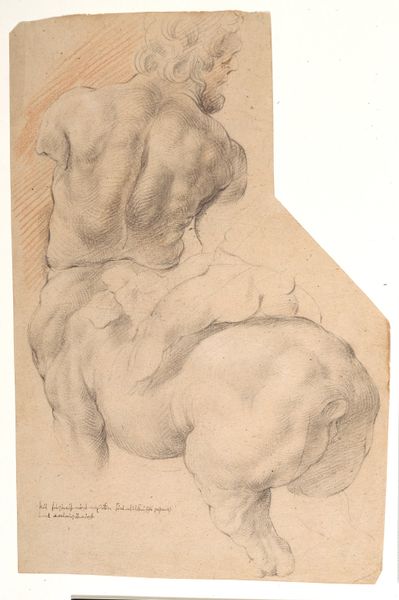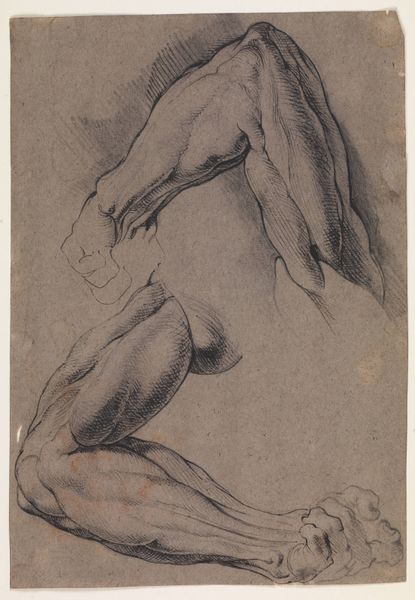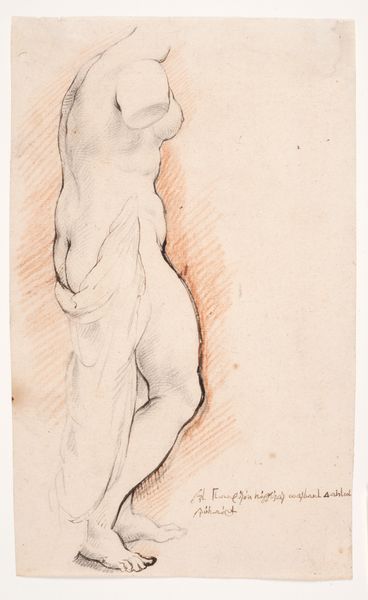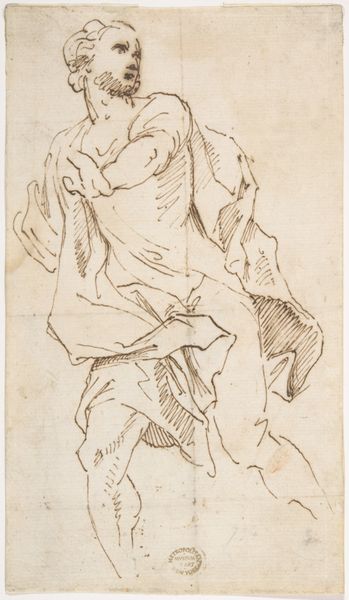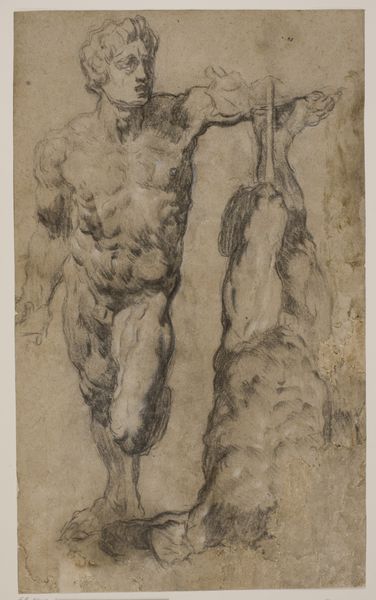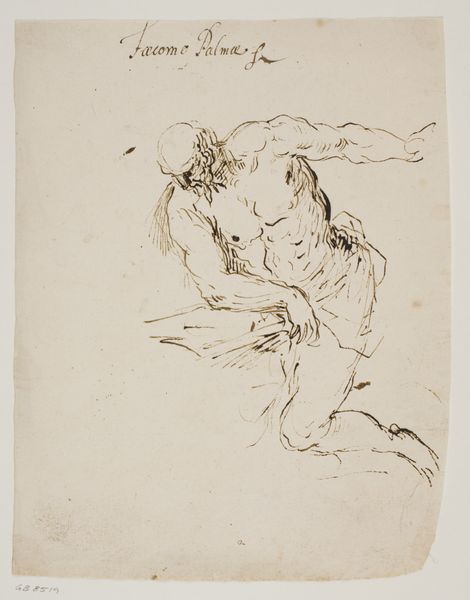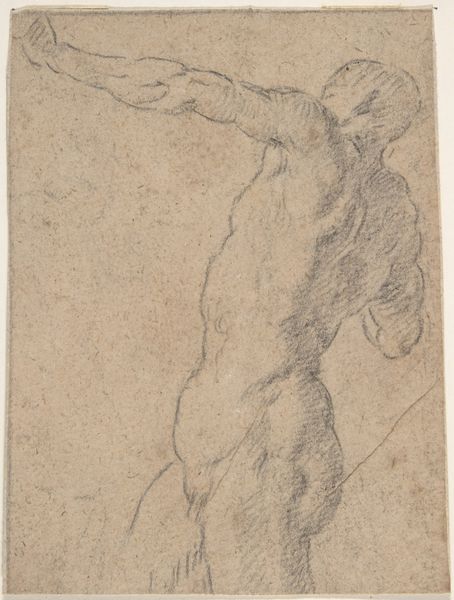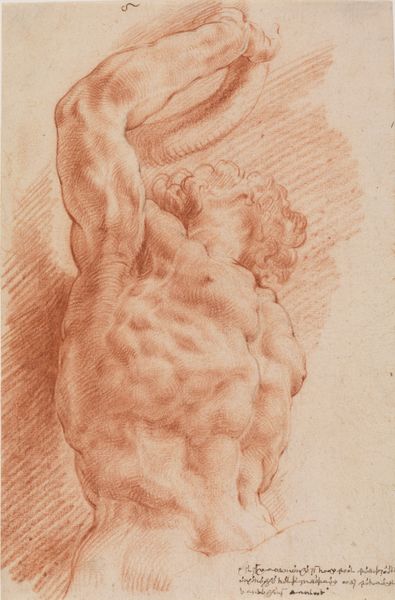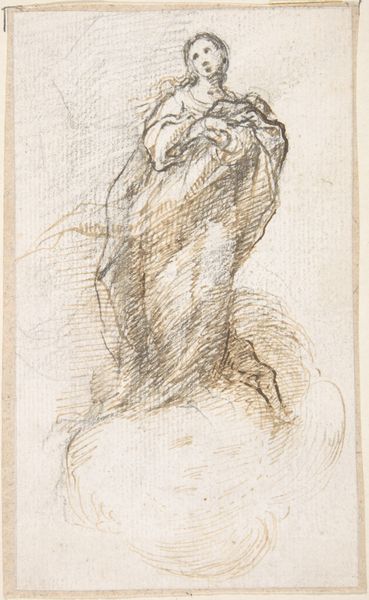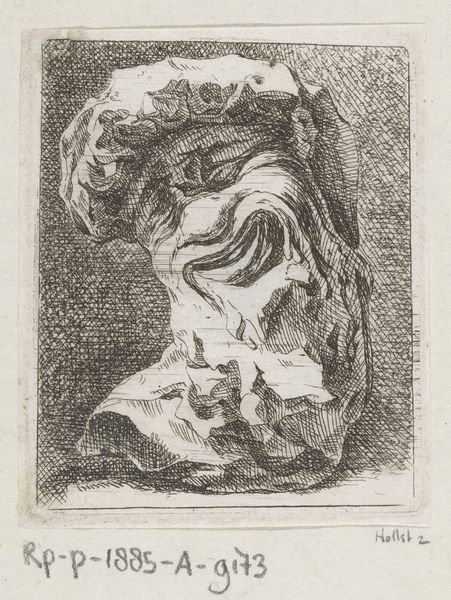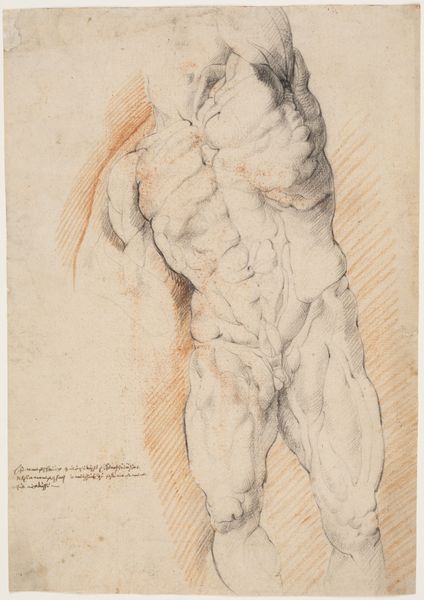
Anatomical Study (écorché). Torso of a flayed man seen from the back half turned to the right 1628 - 1630
0:00
0:00
drawing, paper, ink
#
pencil drawn
#
drawing
#
charcoal drawing
#
figuration
#
paper
#
ink
#
pencil drawing
#
portrait drawing
#
academic-art
Dimensions: 152 mm (height) x 135 mm (width) (bladmaal)
Willem Panneels created this anatomical study of a flayed torso with pen and brown ink in the 17th century. The drawing presents us with a stark, muscular form, meticulously rendered with dense, directional lines. The artist’s hand is evident in the cross-hatching, building shadow and volume to reveal the underlying structure of the human body. Panneels's technique here is not just descriptive; it’s interpretive. Through his concentration on texture and form, the artist engages with the broader concept of how we understand the human body – not as a unified whole, but as a collection of layered, interconnected systems. This approach breaks down conventional notions of beauty and wholeness, prompting viewers to confront a deconstructed, almost alien version of themselves. Consider the absence of color; the monochrome palette forces us to focus on the interplay of light and shadow, on the raw structure beneath the skin. This stripping away of superficial elements encourages a deeper investigation into the materiality of the human form, challenging us to reconsider our own perceptions of self and mortality.
Comments
No comments
Be the first to comment and join the conversation on the ultimate creative platform.

